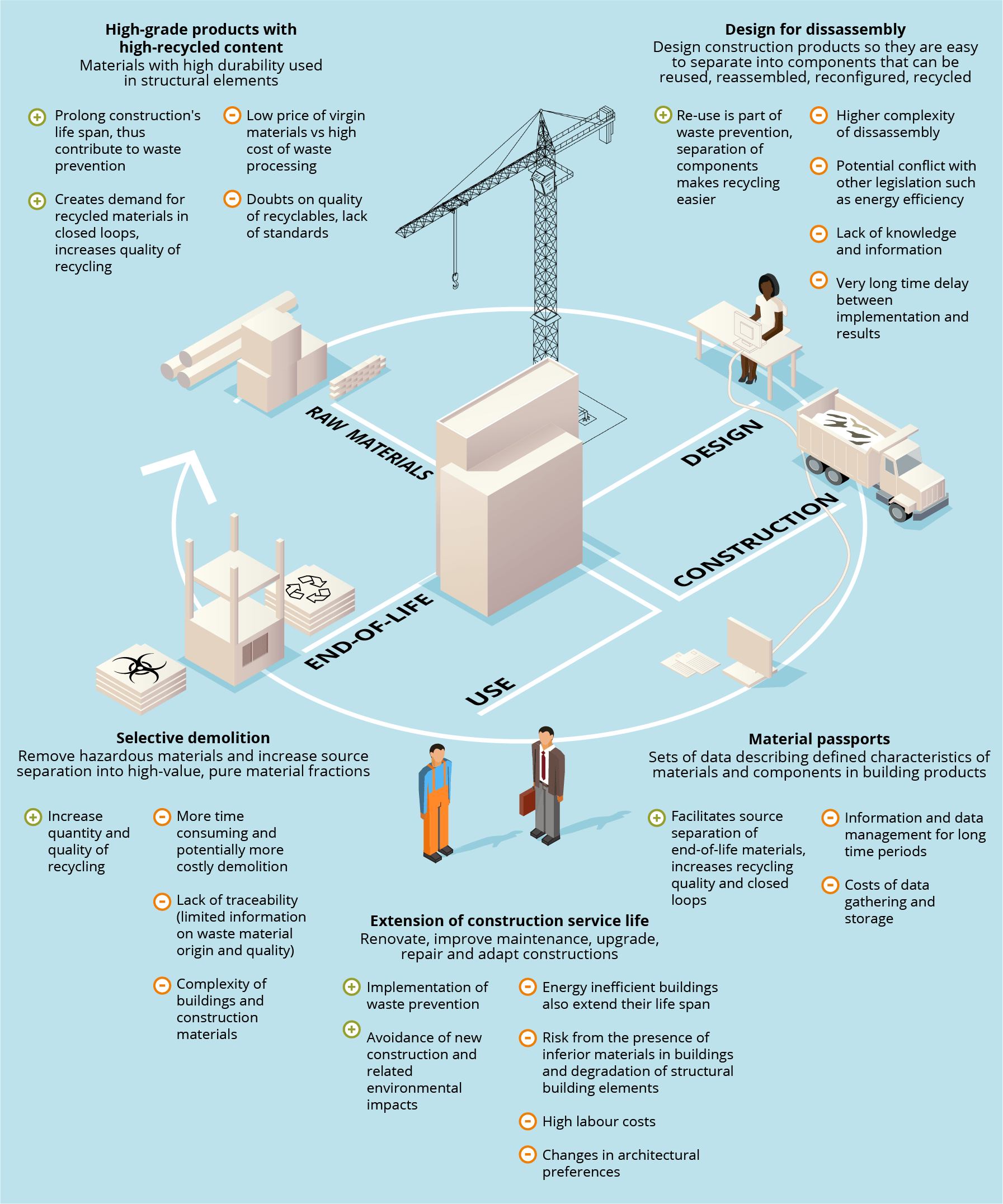10 Ways Architects can include Circular Economy in Future Builds
In recent years, the concept of the circular economy has gained significant traction as a means to combat the growing environmental challenges we face. This paradigm shift in our approach to resource consumption and waste management has found an ideal partner in the world of architecture. Architects, with their ability to envision and create sustainable structures, are playing a pivotal role in advancing the principles of the circular economy
Written by
Chris Pimm
Graduate Sustainability Consultant
To contact please email:
chris.pimm@mainer.co.uk
Circular Economy spans over a wide variety of sectors but its biggest impact is the construction industry. This is because the construction industry is responsible for around 62% of total waste in the UK.
This article explains the key role that architects hold within a project, by incorporating techniques and expertise into a design. We then give 10 strategies that architects will be able to implement into their buildings to promote a Circular Economy.
What is a Circular Economy?
The Ellen McArthur Foundation defines circular economy thinking as ‘designing out waste and pollution, keeping products and materials in use, and regenerating natural systems’.
This system brings us away from our current linear economy of Take-Make-Waste to a system that makes use of materials that would otherwise be unused.
Circular economy reduces the waste in landfill by reusing and recycling materials once a building has reached the end of its life cycle. Circular Economy also reduces the number of raw elements that are extracted by using materials that have already been processed. This in turn reduces the massive amount of energy it takes to extract and manufacture building materials.
The design process of a building is governed by the architects making them crucial when adopting a circular economy approach to a building. By implementing a positive circular economy strategy into a building as early as possible, the easier it will be to implement.
How can Architects advance the principles of the circular economy?
Here are 10 strategies that an architect can use to incorporate circular economy into their design:
1. Design out waste
This is where an architect predicts the material quantities as bespoke as possible to the building. This reduces the amount of energy that will be put into disposing of the leftover materials that weren’t used in the building.
2. Design for Disassembly
To design a building for disassembly the architect must design components of the building to be removed without demolishing, making it easy to reuse and recycle the building materials. Some strategies to achieve this include: make the connections more accessible, designing building components in layers, avoiding the use of unnecessary toxic treatments and finishes, and standardising material dimensions, components, connections, and modularity.
3. Material Efficiency
An architect can design a building to the building regulations whilst using as little materials as possible. This could be by using lightweight structural design strategies, using pre-fabricated elements where appropriate, designing to standard material dimensions to reduce off-cuts and waste on site just for a few examples.
4. Source re-used and recycled materials
By sourcing materials that have been re-used and recycled you are reducing the waste of another building. At times these materials are cheaper as the previous user would not have any use for the material and would be saving money by not disposing the material in landfill.
5. Re-use and Recycle waste materials
A professionally accredited waste service could be used to remove waste that can be reused or recycled from a building. See point 2 - Design for Disassembly on designing components so they can be easily recycled.
6. Material reporting
Working with the contractor to report the materials that will be/are used on site will make it easier to design out waste as per point 1 above. This can be done by documenting all deliveries onto the site which will actively track the materials that are used / wasted on site.
7. Carbon reporting
Similar to the above however this would require calculating the carbon content of the materials used. This will allow the architect to estimate the carbon savings from a circular approach.
8. Using what’s already there
If the architect is designing for the refurbishment / fit out of a building, they can evaluate what is already on site and see how that can be implemented into the design. This saves these materials from being wasted and sent to landfill by giving them a use.
9. Connect the building with nature
An architect can design the landscape to incorporate nature into the interior and exterior of a building. This can build the landscape of the building naturally and increase the biodiversity net gain.
10. Use a Sustainability Consultant
With a sustainability consult on a project they will be able to work with the architect & designers in assisting with incorporating the above strategies in a buildings design.
How can Mainer Associates help?
We have experience in formulating statements to meet planning requirements and offer bespoke circular economy expertise to our clients.
Mainer Associates can produce a circular economy statement for your project which will give recommendations on how to design a building towards a circular economy.
We urge architects to take our advice and strategies that follow in this article. This will allow us to move towards a more sustainable world and reduce unnecessary waste and extraction.
Need help implementing a Circular Economy on a project?
Please get in touch Mainer Associates today
For more Sustainability news and insight please subscribe to our Monthly Mainer Mailshot
To talk to Mainer Associates about any of the issues raised in the article,
please feel free to get in touch here
Please click below for more information on Mainer’s Services:
















